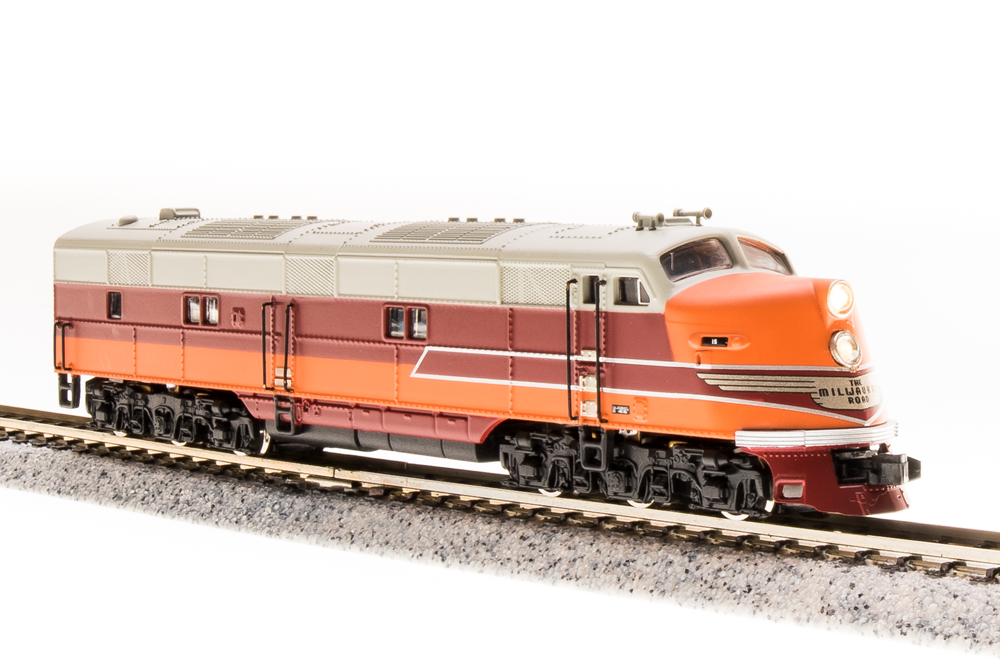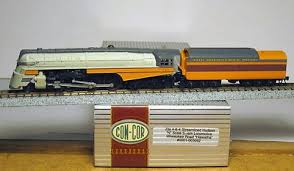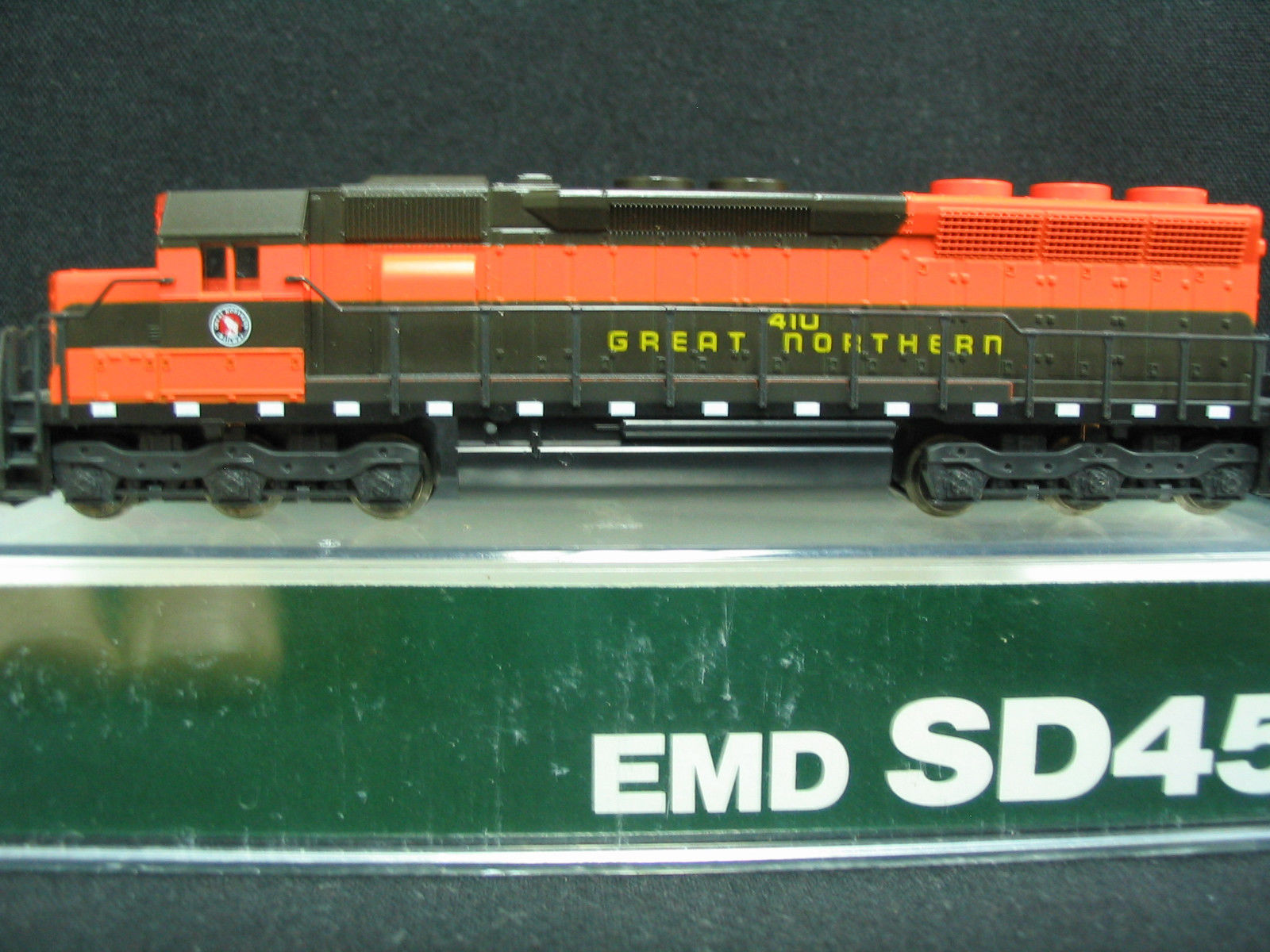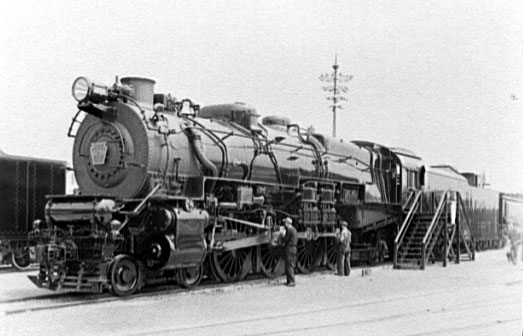Model Information: Unspecified Body Style
Prototype History: Under the Whyte notation for the classification of steam locomotives, 4-8-2 represents the wheel arrangement of four leading wheels, eight powered and coupled driving wheels and two trailing wheels. This type of steam locomotive is commonly known as the Mountain type.
The 4-8-2 was most popular on the North American continent. When the 4-6-2 Pacific fleets were becoming over-burdened as passenger trains grew in length and weight, the first North American 4-8-2 locomotives were built by the American Locomotive Company (ALCO) for the Chesapeake and Ohio Railway (C&O) in 1911. It is possible that the "Mountain" name was originated by C&O, after the Allegheny Mountains where their first 4-8-2 locomotives were built to work. ALCO combined the traction of the eight-coupled 2-8-2 Mikado with the excellent tracking qualities of the Pacific's four-wheel leading truck. Although C&O intended their new Mountains for passenger service, the type also proved ideal for the new, faster freight services that railroads in the United States were introducing. Many 4-8-2 locomotives were therefore built for dual service.
The New York Central Railroad (NYC) called the 4-8-2 type of steam locomotive the Mohawk type. It was known as the Mountain type on other roads, but the mighty New York Central didn't see the name to be fitting on its famous Water Level Route, so it instead picked the name of one of those rivers its rails followed, the Mohawk River, to name its newest type of locomotive. Despite the more common name, the 4-8-2 was actually suited in many ways more to flatland running than slow mountain slogging, with its 4-wheel leading truck for stability at speed.
From Wikipedia
The 4-8-2 was most popular on the North American continent. When the 4-6-2 Pacific fleets were becoming over-burdened as passenger trains grew in length and weight, the first North American 4-8-2 locomotives were built by the American Locomotive Company (ALCO) for the Chesapeake and Ohio Railway (C&O) in 1911. It is possible that the "Mountain" name was originated by C&O, after the Allegheny Mountains where their first 4-8-2 locomotives were built to work. ALCO combined the traction of the eight-coupled 2-8-2 Mikado with the excellent tracking qualities of the Pacific's four-wheel leading truck. Although C&O intended their new Mountains for passenger service, the type also proved ideal for the new, faster freight services that railroads in the United States were introducing. Many 4-8-2 locomotives were therefore built for dual service.
The New York Central Railroad (NYC) called the 4-8-2 type of steam locomotive the Mohawk type. It was known as the Mountain type on other roads, but the mighty New York Central didn't see the name to be fitting on its famous Water Level Route, so it instead picked the name of one of those rivers its rails followed, the Mohawk River, to name its newest type of locomotive. Despite the more common name, the 4-8-2 was actually suited in many ways more to flatland running than slow mountain slogging, with its 4-wheel leading truck for stability at speed.
From Wikipedia
Road Name History:  The Chesapeake and Ohio Railway (reporting marks C&O, CO) was a Class I railroad formed in 1869 in Virginia from several smaller Virginia railroads begun in the 19th century. Led by industrialist Collis P. Huntington, it reached from Virginia's capital city of Richmond to the Ohio River by 1873, where the railroad town (and later city) of Huntington, West Virginia was named for him.
The Chesapeake and Ohio Railway (reporting marks C&O, CO) was a Class I railroad formed in 1869 in Virginia from several smaller Virginia railroads begun in the 19th century. Led by industrialist Collis P. Huntington, it reached from Virginia's capital city of Richmond to the Ohio River by 1873, where the railroad town (and later city) of Huntington, West Virginia was named for him.
Tapping the coal reserves of West Virginia, the C&O's Peninsula Extension to new coal piers on the harbor of Hampton Roads resulted in the creation of the new City of Newport News. Coal revenues also led the forging of a rail link to the Midwest, eventually reaching Columbus, Cincinnati and Toledo in Ohio and Chicago, Illinois.
By the early 1960s the C&O was headquartered in Cleveland, Ohio, USA. In 1972, under the leadership of Cyrus Eaton, it became part of the Chessie System, along with the Baltimore and Ohio and Western Maryland Railway. The Chessie System was later combined with the Seaboard Coast Line and Louisville and Nashville, both the primary components of the Family Lines System, to become a key portion of CSX Transportation (CSXT) in the 1980s. A substantial portion of Conrail was added in 1999.
C&O's passenger services ended in 1971 with the formation of Amtrak. Today Amtrak's tri-weekly Cardinal passenger train follows the historic and scenic route of the C&O through the New River Gorge in one of the more rugged sections of the Mountain State. The rails of the former C&O also continue to transport intermodal and freight traffic, as well as West Virginia bituminous coal east to Hampton Roads and west to the Great Lakes as part of CSXT, a Fortune 500 company which was one of seven Class I railroads operating in North America at the beginning of the 21st century.
At the end of 1970 C&O operated 5067 miles of road on 10219 miles of track, not including WM or B&O and its subsidiaries.
Read more on Wikipedia.

Tapping the coal reserves of West Virginia, the C&O's Peninsula Extension to new coal piers on the harbor of Hampton Roads resulted in the creation of the new City of Newport News. Coal revenues also led the forging of a rail link to the Midwest, eventually reaching Columbus, Cincinnati and Toledo in Ohio and Chicago, Illinois.
By the early 1960s the C&O was headquartered in Cleveland, Ohio, USA. In 1972, under the leadership of Cyrus Eaton, it became part of the Chessie System, along with the Baltimore and Ohio and Western Maryland Railway. The Chessie System was later combined with the Seaboard Coast Line and Louisville and Nashville, both the primary components of the Family Lines System, to become a key portion of CSX Transportation (CSXT) in the 1980s. A substantial portion of Conrail was added in 1999.
C&O's passenger services ended in 1971 with the formation of Amtrak. Today Amtrak's tri-weekly Cardinal passenger train follows the historic and scenic route of the C&O through the New River Gorge in one of the more rugged sections of the Mountain State. The rails of the former C&O also continue to transport intermodal and freight traffic, as well as West Virginia bituminous coal east to Hampton Roads and west to the Great Lakes as part of CSXT, a Fortune 500 company which was one of seven Class I railroads operating in North America at the beginning of the 21st century.
At the end of 1970 C&O operated 5067 miles of road on 10219 miles of track, not including WM or B&O and its subsidiaries.
Read more on Wikipedia.
Brand/Importer Information: 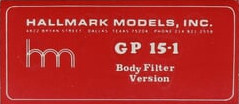 Hallmark Models was the importing arm of Bobbye Hall's Hobby Shop of Dallas, Texas. When Bobbye Hall retired in her nineties, both the importing business and the shop closed down.
Hallmark Models was the importing arm of Bobbye Hall's Hobby Shop of Dallas, Texas. When Bobbye Hall retired in her nineties, both the importing business and the shop closed down.

Item created by: james13pugh on 2022-05-03 19:54:45. Last edited by Alain LM on 2022-05-05 01:31:38
If you see errors or missing data in this entry, please feel free to log in and edit it. Anyone with a Gmail account can log in instantly.
If you see errors or missing data in this entry, please feel free to log in and edit it. Anyone with a Gmail account can log in instantly.




